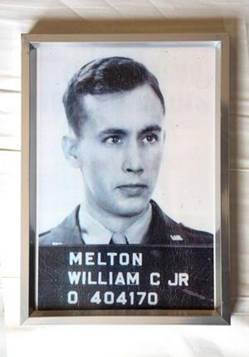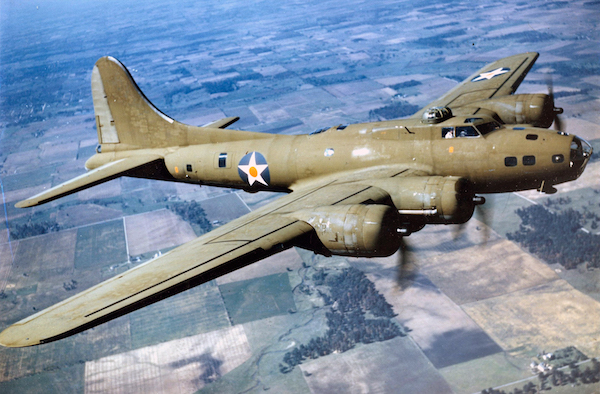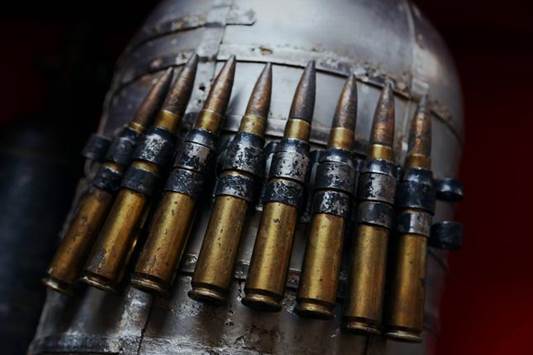In August 2001 a unique underwater discovery occurred off the coast of Inishowen Head, when local diver Danny Keenan and his dive team located the remains of a US B 17 bomber in just over 20 metres of water.
Wreck diving off the Donegal coast is now big business with divers coming from Europe and the UK to dive the deep war wrecks that litter the Irish coastline, but to find a virgin aircraft wreck at recreational diving depth is the stuff of a divers dreams – a once in a generation experience.
Danny and his team are fortunate enough to be counted amongst such lucky divers when their persistence paid off and they at last came across the untouched remains of the ‘The Meltin Pot’.
by Dearn McClintock
Last Thursday evening Danny recounted his adventure to a full audience in The Tower Museum, Derry and over a two hour session he enthralled everyone with his premonition of a successful dive on a crystal clear summers evening in 2001, when he got a glimpse of the aluminium structure of the aircraft shimmering in the diffused sunlight on the seabed.
Danny recounted the condition of the wreck and his emotions at that moment of discovery; the joy at finding her at last and the fearful realisation that there could have been life munitions still on board.
The Boeing B 17 heavy bomber or Flying Fortress was the about the biggest thing flying in WWII, with a length of 22m, wingspan 31m, unladed weight of 16 tonnes and when loaded they weighed in at 24 tonnes. It took 4 Wright turbocharged radial engines, each producing 1,200 HP to power them to maximum speed of 287 mph and achieve a maximum height of over 10,000 metres.
The B17’s were armed with 13×50 calibre Browning machine guns and 3.6 tonnes of bombs and ordinarily operated by a crew of 10.
The unique identification of The Meltin Pot, or Plane Number was 41-24516 and she was assigned to a bomber command base in Thurleigh in England.
The assembled audience were told of how and indeed why her engines caught fire far out in the Atlantic, with one after another cutting out until three of the four were out of action and the skill and bravery of Captain Curt Melton, who the aircraft was named after, when he safely ditch her near to Magilligan Strand in Co. Derry on the 6th September 1942.
Their safe recovery was delivered in no small part to the quick actions of a young woman from Greencastle, Elizabeth Ferguson, who was sailing in her 15ft boat when she saw the aircraft ditch nearby.
While all on board at the time were safely recovered, for some their wellbeing did not last long, with five of the crew of nine dying in the following year due to separate enemy actions over France.
While Curt Melton survived the war, the story of Staff Sargent Lee Kessler, the Flight Engineer, is worthy of a movie in its own right.
Including this occasion between 1942 and 1945 Kessler was on four different aircraft that crashed during this time, with the last incident resulting in his incarceration as a POW, he endured two forced marches by the enemy and the horror of witnessing a German war crime, in the shooting of unarmed civilian’s prisoners towards the end of the war.
Kessler’s anguish of witnessing the shooting stayed with him all his life and in later years he depicted it in a Holocaust painting that has become famous as The Hand.
Danny was able to relate these survivors’ stories because the discovery of the remains of The Meltin Pot was the beginning of another search, as he found and interviewed both Melton and Kessler when they had a clear memory of the events that clearly influenced them for the rest of their lives.
This contact with Melton and Kessler was through Russel Strong, who was also a US WWII veteran and was well known at that time for his knowledge of the history and service of B17’s during that time.
Similar to the recent lecture on the Laurentic, also hosted by The Tower Museum, the witness testimony of the survivors is what really brings the event to life, so that future generations can understand the terrible consequences of war.

Danny kindly brought some of the rescued artifacts to Thursdays’ lecture, including the iconic green tinted Aviators Ray Ban’s that were saved in pristine condition inside their protective case, which had the manufacturer’s logo imprinted upon it, that of Bausch and Lomb lens manufacture.
Today ‘The Meltin Pot’ remains where she sank and Danny found her, but because of the corrosive nature of seawater on aluminum any hope of recovering her is technically unfeasible.
But nonetheless, the story lives on, thanks in no small way to Danny’s adventure on a glorious summer’s evening in 2001.








